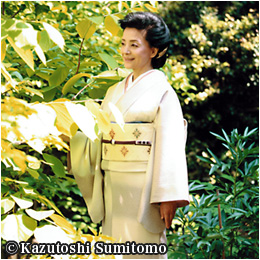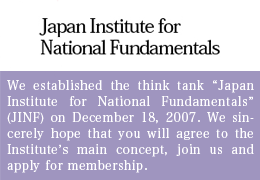SEVEN DECADES AFTER WORLD WAR II, JAPAN MUST CONFRONT THREAT FROM CHINA
A prominent American expert on China warned on July 31 that Japan today is faced with its worst national crisis since the Mongolian invasion in the late 13th century. In an address at the Japan Foundation for National Fundamentals (JINF), a privately financed Tokyo think tank I head, Professor Arthor Waldron of the University of Pennsylvania noted that Japanese at the time felt a great danger as the combined Mongolian/Goryo army occupied Iki and Tsushima Islands:
“The difference is that today the threat you (are faced with) is one that is coming from afar and it’s closing in…it is like taking a big rope around somebody and then slowly pulling tighter and tighter and tighter.”
Waldron sounded an alarm that most Japanese may not be aware of the realities of the Chinese threat to their nation, and that “by the time the person realizes that they are caught, and they are helpless, it is too late.”
China’s challenges to Japan are wide-ranging and diverse—from fabrication of Japan’s wartime history to violations of Japanese territorial land and seas. It is impossible to come to grips with the real intent of the Chinese aggression toward Japan without viewing all of this as part and parcel of Beijing’s grand strategy for global supremacy.
China’s intent becomes crystal clear when one takes the big picture view. Clearly, Beijing is seeking to establish control over the East and South China Seas, with the ultimate goal of compelling the US and Japan to recognize its hegemony over the region.
Let us for a moment probe what drove China to rush its constructions of as many as a dozen gigantic gas and oil drilling platforms in the East China Sea , ignoring the 2008 agreement between Tokyo and Beijing on joint development. Viewing China’s development scheme as part of its overall strategy for the Asia-Pacific, one can easily see the motive for development was more than just economics.
Should China decide to convert these gigantic maritime structures to military use, warns Professor Emeritus Tadae Takubo of Tokyo’s Kyorin University, who serves as JINF’s deputy director, Japan will have to cope with a security threat as serious as the Cuban Missile Crisis of 1962. And yet, the Japanese government has until recently refrained from releasing information pertaining to the aggressive Chinese development scheme in the East China Sea—facts that have a great bearing on Japan’s peace and security. Although the government finally decided to release the news only after Shotaro Yachi, head of the National Security Commission charged with the nation’s security policy, visited Beijing July 16 for “consultations” with the Chinese, the overall government response has been stunningly subdued.
Government sources claim Japan finds it “difficult to lodge legal protests” against Beijing, as the Chinese have built all of their drilling platforms on their side of the “Median Line” proposed by Tokyo. Discussions in Japan have mostly been limited to interpretations of the economic factors involved in the Chinese projects, as the structures are platforms built ostensively to drill natural gas. Officials have been unable to generate arguments linking the platforms with China’s military objectives—not to mention any sense of crisis that the Chinese threat in its substance could be as serious as the Cuban Missile Crisis.
Filling Gap in Chinese Air Coverage
This is because many of us Japanese have simply become numb to outside threats during the 70 years of peace we have enjoyed since World War II. Let us first take a hard look at the economic aspects of China’s gas field development. China has been far ahead of Japan in diversifying its supply of energy. Consequently, the ratio of energy sourced from ocean locations has not been very large. Over the past decade, China’s total production of gas and oil sourced from the ocean stood at about a combined 6.5 million tons—just 9.5 percent of China’s total energy consumption of 680 million tons during that period. Looking at natural gas by itself, China has imported 30.4 million tons of (LNG) liquid natural gas from 11 nations over the past 12 years, of which 52 percent originated from Turkmenistan, transported via a pipe line through Kazakhstan. Because there are no other natural gas buyers, Turkmenistan has remained a perfect buyer’s market for the Chinese.
A similar contract favorable to China, worth an estimated US$400 billion, has been signed with Russia. Gas produced in Russia is expected to be delivered via a pipeline bypassing Mongolia to Chinese coastal regions starting in 2018. That Russia was forced to make significant concessions indicates China has managed to create a framework under which a stable and relatively inexpensive supply of imported natural gas is guaranteed.
There is no denying the possibility that China’s intent in its development of this area of the sea is energy related, but it appears its true motives are linked to its military objectives. To truly understand the various Chinese initiatives in the East and South China Seas, each must be seen as part of a consolidated strategy. Take, for example, their steadfast refusal to recognize the Okinotorishima Islands (an uninhabited 8 square kilometer atoll located on the Palau-Kyushu Ridge in the Philippine Sea) along with the EEZ (Exclusive Economic Zone) around it. I will touch on the Okinotorishima situation further below.
What each of these sea areas has in common is the fact that China does not have command of the air space over them. China is now desperately trying to fill this gap.
Conversion of drilling platforms to military use will enable the Air Defense Identification Zone (ADIZ) China has set up to function properly, restricting the moves of the Japanese and American forces in the area.
The artificial islands China has created by reclaiming seven islets in the South China Sea are designed to significantly strengthen China’s air control capability in the air space above the central South China Sea, the Philippines, and the Bashi Channel.
Simultaneously, China is strengthening its influence on Taiwan in every way possible, depriving it of its ability to block a possible Chinese invasion. On July 30-31, four Chinese military planes, including two H-6H bombers, flew over the Miyako Strait—a waterway between Okinawa and Miyako Islands—out to the Pacific, turned around, and then flew back to the Chinese mainland via the same route. If China manages to enhance its control of air space over the Taiwan Strait, there is no question Japan’s peace and security will be affected immeasurably.
Experts opine that behind Beijing’s refusal to recognize the Okinotorishima Islands is its fear of the possibility that US cruise missiles, which boast a range of 3,000 kilometers, would be able to attack Beijing. In case of an armed conflict with the US, it appears China’s basic strategy is to secure the sea within a radius of 3,000 kilometers from Beijing, protecting the capital from such attack. That Beijing asserts it will never recognize the EEZ around the Okinotorishima Islands must reflect its determination to put the sea areas surrounding the far-away atoll under its own control.
China’s Suspicious Enthusiasm to Woo Abe
In seeking “the Great Revival of the Chinese People,” Xi Jinping apparently hopes to emulate Sun Tze’s “Art of War”—by not actually fighting the US but by in effect weakening American power in the region.
If successful, this tactic of winning a war without actually fighting it entails forming a Chinese sphere of influence across the East China Sea, the western Pacific including the Okinotorishima Islands, the South China Sea, the Bashi Channel, and the Taiwan Strait, coming into possession of the sea lanes that are the lifeline for the US and Japan. Through these sea lanes, Japan transports more than 90 percent of oil it imports, and the US more than half of its strategic resources.
If one considers China’s development of gas fields in the East China Sea as part of the big picture of its grand global strategy, the danger of judging it simply on the basis of economic factors alone is obvious.
The energy that spurs Chinese on comes from a dark and deeply-ingrained grudge that the world once deprived their ancestors of practically everything they had. The Chinese are dreaming of forming a world based on their own values—not those of the US or Europe. But are the Chinese people really happy in a country that embodies these values? In just the month of July, more than 200 human rights lawyers and activists were taken into custody or arrested in China. Tibetans, Uyghurs, and Mongolians have continuously been mercilessly suppressed, and many massacred. As economic growth takes precedence over everything, the air and water in China are grossly contaminated.
Demonstrating a suspicious enthusiasm, China is now working on a plan to get Prime Minister Shinzo Abe to accept an invitation to visit Beijing this fall. The invitation apparently has three conditions attached, including Abe’s expression of his readiness to not visit Yasukuni Shrine again.
Visiting Beijing despite these horrendous conditions and meeting with his Chinese counterpart, who refuses to recognize basic human rights and freedoms in China—while continuing to also fabricate the history of China’s war with Japan—obviously does not suit a Japanese prime minister committed to his own set of universal values. Abe should be extremely prudent in weighing the invitation. If he is concerned in the slightest that such a trip will not be in Japan’s national interests, he should not go.
(Translated from “Renaissance Japan” column no. 667 in the August 31, 2015 issue of The Weekly Shincho)








